Portal:Books/Selected article
| This Wikipedia page has been superseded by historical reference. |
| Note: Article entries are now being transcluded directly on the main portal page. However, this page should be retained for historical reference. |
Usage
- Add a new Selected article to the next available subpage.
- Update "max=" to new total for its {{Random portal component}} on the main page.
Selected article 1
Portal:Books/Selected article/1

The Encyclopædia Britannica is a general English-language encyclopaedia published by Encyclopædia Britannica, Inc., a privately held company. The articles in the Britannica are aimed at educated adult readers, and written by a staff of 19 full-time editors and over 4,000 expert contributors. It is widely perceived as the most scholarly of encyclopaedias.The Britannica is the oldest English-language encyclopaedia still in print. It was first published between 1768 and 1771 in Edinburgh and quickly grew in popularity and size, with its third edition in 1801 reaching 20 volumes. Its rising stature helped in recruiting eminent contributors, and the 9th edition (1875–1889) and the 11th edition (1911) are regarded as landmark encyclopaedias for scholarship and literary style. In 1933, the Britannica became the first encyclopaedia to adopt a "continuous revision" policy, in which the encyclopaedia is continually reprinted and every article is updated on a regular schedule.
Selected article 2
Portal:Books/Selected article/2

Oroonoko is a short
Selected article 3
Portal:Books/Selected article/3
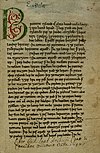
The Peterborough Chronicle (also called the Laud Manuscript), one of the kept its own, individual chronicle, and the chronicles were not compared with each other or in any way kept uniform. However, whenever a monastery's chronicle was damaged, or when a new monastery began a chronicle, nearby monasteries would lend out their chronicles for copying. Thus, a new chronicle would be identical to the lender's until they reached the date of copying and then would be idiosyncratic.
Selected article 4
Portal:Books/Selected article/4

The Voynich manuscript is a mysterious
Selected article 5
Portal:Books/Selected article/5

Thoughts on the education of daughters: with reflections on female conduct, in the more important duties of life is the first published work of the British feminist Mary Wollstonecraft. Published in 1787 by her friend Joseph Johnson, Thoughts is a conduct book that offers advice on female education to the emerging British middle class. Although dominated by considerations of morality and etiquette, the text also contains basic child-rearing instructions, such as how to care for an infant.An early version of the modern self-help book, the 18th-century British conduct book drew on many literary traditions, such as advice manuals and religious narratives. There was an explosion in the number of conduct books published during the second half of the eighteenth century, and Wollstonecraft took advantage of this burgeoning market when she published Thoughts. However, the book was only moderately successful: it was favourably reviewed, but only by one journal and it was reprinted only once. Although it was excerpted in popular contemporary magazines, it was not republished until the rise of feminist literary criticism in the 1970s.
Selected article 6
Portal:Books/Selected article/6 The Log from the Sea of Cortez is a book written by
Selected article 7
Portal:Books/Selected article/7 The Lord of the Rings is an
Selected article 8
Portal:Books/Selected article/8

The Relapse, or, Virtue in Danger is a
Selected article 9
Portal:Books/Selected article/9
The Cantos by
Selected article 10
Portal:Books/Selected article/10

Starship Troopers is a
Selected article 11
Portal:Books/Selected article/11

The Book of Kells (Irish: Leabhar Cheanannais) (Dublin, Trinity College Library, MS A. I. (58), sometimes known as the Book of Columba) is an illuminated manuscript that is a masterwork of Western calligraphy and represents the pinnacle of Insular illumination. It is also widely regarded as Ireland's finest national treasure. Transcribed by Celtic monks ca. 800, it contains the four Gospels of the New Testament in Latin, together with various prefatory texts and tables. The text of the Gospels is largely drawn from the Vulgate, although it also includes several passage drawn from the earlier versions of the Bible known as the Vetus Latina.The illustrations and ornamentation of the Book of Kells surpasses that of other Insular Gospels in extravagance and complexity. The decoration combines traditional Christian iconography with the ornate swirling motifs of typical of Insular art. Figures of humans, animals and mythical beasts together with intricate knotwork and interlacing patterns in vibrant colours enliven the manuscript's pages. Many of these minor decorative elements are imbued with Christian symbolism and so further emphasize the themes of the major illustrations.
Selected article 12
Portal:Books/Selected article/12
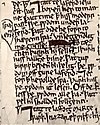
The Ormulum or Orrmulum is a 12th-century work of biblical
Selected article 13
Portal:Books/Selected article/13

The Anglo-Saxon Chronicle is a collection of
Selected article 14
Portal:Books/Selected article/14
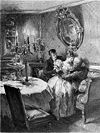
Le Père Goriot (English: Father Goriot or Old Goriot) is an 1835 novel by
Selected article 15
Portal:Books/Selected article/15
Make Way for Ducklings is a children's
Selected article 16
Portal:Books/Selected article/16

A Tale of a Tub was the first major work written by
Selected article 17
Portal:Books/Selected article/17

Original Stories from Real Life; with Conversations Calculated to Regulate the Affections, and Form the Mind to Truth and Goodness is the only complete work of
Selected article 18
Portal:Books/Selected article/18
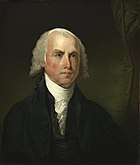
Federalist No. 10 (Federalist Number 10) is an
Selected article 19
Portal:Books/Selected article/19
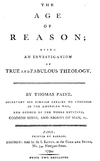
The Age of Reason: Being an Investigation of True and Fabulous Theology, a
Selected article 20
Portal:Books/Selected article/20 The Slave Community: Plantation Life in the Antebellum South is a book written by
Selected article 21
Portal:Books/Selected article/21

The Art of Cookery Made Plain and Easy is a cookbook by Hannah Glasse (1708–1770), first published in 1747. It was a bestseller for a century after its first publication, dominating the English-speaking market and making Glasse one of the most famous cookbook authors of her time. The book ran through at least 40 editions, many of which were copied without explicit author consent. It was published in Dublin from 1748, and in America from 1805.
Glasse said in her note "To the Reader" that she used plain language so that servants would be able to understand it.
The 1751 edition was the first book to mention
Selected article 22
Portal:Books/Selected article/22

A History of the Birds of Europe, Including all the Species Inhabiting the Western Palearctic Region is a nine-volume ornithological book published in parts between 1871 and 1896. It was mainly written by Henry Eeles Dresser, although Richard Bowdler Sharpe co-authored the earlier volumes. It describes all the bird species reliably recorded in the wild in Europe and adjacent geographical areas with similar fauna, giving their worldwide distribution, variations in appearance and migratory movements.
The pioneering ornithological work of
Selected article 23
Portal:Books/Selected article/23
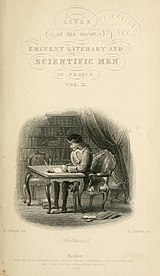
The
The Lives formed part of the Cabinet of Biography in the Cabinet Cyclopaedia. Within the set of ten, the three-volume Lives of the Most Eminent Literary and Scientific Men of Italy, Spain and Portugal (1835–37) and the two-volume Lives of the Most Eminent Literary and Scientific Men of France (1838–39) consist of
Selected article 24
Portal:Books/Selected article/24
Ace, along with Ballantine Books, was one of the leading science fiction publishers for its first ten years of operation. The death of owner A. A. Wyn in 1967 set the stage for a later decline in the publisher's fortunes. Two leading editors, Donald A. Wollheim and Terry Carr, left in 1971, and in 1972 Ace was sold to Grosset & Dunlap. Despite financial troubles, there were further successes, particularly with the third Ace Science Fiction Specials series, for which Carr came back as editor. Further mergers and acquisitions resulted in the company becoming absorbed by Berkley Books. Ace later became an imprint of Penguin Group (USA).
Selected article 25
Portal:Books/Selected article/25

The plot of the book revolves around former army captain Arthur Farnham, a wealthy resident of Buffland (an analog of Cleveland). He organizes Civil War veterans to keep the peace when the Bread-winners, a group of lazy and malcontented workers, call a violent general strike. He is sought in marriage by the ambitious Maud Matchin, daughter of a carpenter, but instead weds a woman of his own class.
Hay wrote his only novel as a reaction to several strikes that affected him and his business interests in the 1870s and early 1880s. Originally published in installments in The Century Magazine, the book attracted wide interest. Hay had left hints to his identity in the novel, and some guessed right, but he never acknowledged the book as his, and it did not appear with his name on it until after his death in 1905. Hay's hostile view of organized labor was soon seen as outdated, and the book is best remembered for its onetime popularity and controversial nature.
Selected article 26
Portal:Books/Selected article/26

The Negro Motorist Green Book (also, The Negro Travelers' Green Book, or Green-Book) was a guidebook for African American roadtrippers. It was founded by Victor Hugo Green, an African American, New York City postal worker who published it annually from 1936 to 1966. This was during the era of Jim Crow laws, when open and often legally prescribed discrimination against African Americans especially and other non-whites was widespread. While pervasive racial discrimination and poverty limited black car ownership, the emerging African American middle class bought automobiles as soon as they could, but faced a variety of dangers and inconveniences along the road, from refusal of food and lodging to arbitrary arrest. In response, Green wrote his guide to services and places relatively friendly to African Americans. Eventually, he also founded a travel agency.
African American travelers faced discrimination such as white-owned businesses refusing to serve them or repair their vehicles, being refused accommodation or food by white-owned hotels, and threats of physical violence and forcible expulsion from whites-only "sundown towns". Green founded and published the Green Book to avoid such problems, compiling resources "to give the Negro traveler information that will keep him from running into difficulties, embarrassments and to make his trip more enjoyable". The maker of a 2019 documentary film about the book offered this summary: "Everyone I was interviewing talked about the community that the Green Book created: a kind of parallel universe that was created by the book and this kind of secret road map that the Green Book outlined".
Selected article 27
Portal:Books/Selected article/27
In the first section of Fenwick's book, she recounts the est training process and the methods used during the course. Fenwick details the rules or "agreements" laid out by the trainers to the attendees, which include not talking to others or leaving the session to go to the bathroom unless during an announced break period. The second section is analytic: Fenwick analyzes the methods used by the est trainers, evaluates the course's potential effects, and discusses Erhard's background. Fenwick concludes that the program's long-term effects are unknown, the est training may not be appropriate for certain groups of people, and that a large proportion of participants report perceived positive effects.
Selected article 28
Portal:Books/Selected article/28
The first edition was reviewed favorably in the International Journal of Primatology, Conservation Biology, and Lemur News. Reviewers, including Alison Jolly, praised the book for its meticulous coverage of each species, numerous high-quality illustrations, and engaging discussion of lemur topics, including conservation, evolution, and the recently extinct subfossil lemurs. Each agreed that the book was an excellent resource for a wide audience, including ecotourists and lemur researchers. A lengthy review of the second edition was published in the American Journal of Primatology, where it received similar favorable comments, plus praise for its updates and enhancements. The third edition was reviewed favorably in Lemur News; the reviewer praised the expanded content of the book, but was concerned that the edition was not as portable as its predecessors.
Selected article 29
Portal:Books/Selected article/29 The wordless novel is a narrative genre that uses sequences of captionless pictures to tell a story. As artists have often made such books using woodcut and other relief printing techniques, the terms woodcut novel or novel in woodcuts are also used. The genre flourished primarily in the 1920s and 1930s and was most popular in Germany.
The wordless novel has its origin in the
Following World War II, new examples of wordless novels became increasingly rare, and early works went out of print. Interest began to revive in the 1960s when the American comics fandom subculture came to see wordless novels as prototypical book-length comics. In the 1970s, the example of the wordless novel inspired cartoonists such as Will Eisner and Art Spiegelman to create book-length non-genre comics—"graphic novels". Cartoonists such as Eric Drooker and Peter Kuper took direct inspiration from wordless novels to create wordless graphic novels.
Selected article 30
Portal:Books/Selected article/30
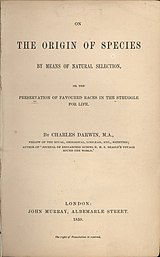
Various evolutionary ideas had already been proposed to explain new findings in biology. There was growing support for such ideas among dissident anatomists and the general public, but during the first half of the 19th century the English scientific establishment was closely tied to the Church of England, while science was part of natural theology. Ideas about the transmutation of species were controversial as they conflicted with the beliefs that species were unchanging parts of a designed hierarchy and that humans were unique, unrelated to other animals. The political and theological implications were intensely debated, but transmutation was not accepted by the scientific mainstream.
Selected article 31
Portal:Books/Selected article/31 The Randolph Caldecott Medal, frequently shortened to just the Caldecott, annually recognizes the preceding year's "most distinguished American picture book for children". It is awarded to the illustrator by the Association for Library Service to Children (ALSC), a division of the American Library Association (ALA). The Caldecott and Newbery Medals are considered the most prestigious American children's book awards. Beside the Caldecott Medal, the committee awards a variable number of citations to runners-up they deem worthy, called the Caldecott Honor or Caldecott Honor Books.
The Caldecott Medal was first proposed by Frederic G. Melcher, in 1937. The award was named after English illustrator Randolph Caldecott. Unchanged since its founding, the medal, which is given to every winner, features two of Caldecott's illustrations. The awarding process has changed several times over the years, including in 1971 which began use of the term "Honor" for the runner-ups. There have been between one and five honor books named each year.
Selected article 32
Portal:Books/Selected article/32 The
As of 2023, the Nobel Prize in Literature had been awarded to 120 individuals. 17 women have been awarded the Nobel Prize in Literature, the second highest number of any of the Nobel Prizes behind the Nobel Peace Prize. As of 2023, there have been 29 English-speaking laureates of the Nobel Prize in Literature, followed by French with 16 laureates and German with 14 laureates. France has the highest number of Nobel laureates.
Selected article 33
Portal:Books/Selected article/33

The
Orwell is best remembered for his political commentary as a left-wing anti-totalitarian. As he explained in the essay "Why I Write" (1946), "Every line of serious work that I have written since 1936 has been written, directly or indirectly, against totalitarianism and for democratic socialism, as I understand it." To that end, Orwell used his fiction as well as his journalism to defend his political convictions. He first achieved widespread acclaim with his fictional novella Animal Farm and cemented his place in history with the publication of Nineteen Eighty-Four shortly before his death. While fiction accounts for a small fraction of his total output, these two novels are his best-selling works, having sold almost fifty million copies in sixty-two languages by 2007—more than any other pair of books by a twentieth-century author.
Selected article 34
Portal:Books/Selected article/34
As she had started to do in her first autobiography, I Know Why the Caged Bird Sings, and continued throughout her series, Angelou upholds the long tradition of African-American autobiography. At the same time she makes a deliberate attempt to challenge the usual structure of the autobiography by critiquing, changing, and expanding the genre. Angelou had matured as a writer by the time she wrote Traveling Shoes, to the point that she was able to play with the form and structure of the work. As in her previous books, it consists of a series of anecdotes connected by theme. She depicts her struggle with being the mother of a grown son, and with her place in her new home.
Selected article 35
Portal:Books/Selected article/35 Everything Tastes Better with Bacon: 70 Fabulous Recipes for Every Meal of the Day is a book about cooking with bacon written by author, food commentator and The Oregonian columnist Sara Perry. The book was published in the United States on May 1, 2002, by Chronicle Books, and in a French language edition in 2004 by Les Éditions de l'Homme in Montreal. In it, Perry describes her original concept of recipes combining sugar and bacon. Her book includes recipes for bacon-flavored dishes and desserts.
The book received mainly positive reviews and its recipes were selected for inclusion in The Best American Recipes 2003–2004. The
Selected article 36
Portal:Books/Selected article/36
After the war, Wiesel moved to Paris and in 1954 completed an 862-page manuscript in Yiddish about his experiences, published in Argentina as the 245-page Un di velt hot geshvign ("And the World Remained Silent"). The novelist François Mauriac helped him find a French publisher. Les Éditions de Minuit published 178 pages as La Nuit in 1958, and in 1960 Hill & Wang in New York published a 116-page translation as Night.
Selected article 37
Portal:Books/Selected article/37
The book records the narrator's thoughts on solitude, writing, and religion, as well as scientific observations on the flora and fauna she encounters. It touches on themes of faith, nature, and awareness, and is also noted for its study of
Selected article 38
Portal:Books/Selected article/38 Rambles in Germany and Italy, in 1840, 1842, and 1843 is a travel narrative by the British Romantic author Mary Shelley. Issued in 1844, it is her last published work. Published in two volumes, the text describes two European trips that Mary Shelley took with her son, Percy Florence Shelley, and several of his university friends. Mary Shelley had lived in Italy with her husband, Percy Bysshe Shelley, between 1818 and 1823. For her, Italy was associated with both joy and grief: she had written much while there but she had also lost her husband and two of her children. Thus, although she was anxious to return, the trip was tinged with sorrow. Shelley describes her journey as a pilgrimage, which will help cure her depression.
At the end of the second trip, Mary Shelley spent time in Paris and associated herself with the "
Selected article 39
Portal:Books/Selected article/39
The book received a mostly favorable reception from news sources and library trade publications.
Selected article 40
Portal:Books/Selected article/40 The Romney Literary Society (also known as the Literary Society of Romney) existed from January 30, 1819, to February 15, 1886, in Romney, West Virginia. Established as the Polemic Society of Romney, it became the first organization of its kind in the present-day state of West Virginia, and one of the first in the United States. The society was founded by nine prominent men of Romney with the objectives of advancing literature and science, purchasing and maintaining a library, and improving educational opportunities.
The society debated an extensive range of scientific and social topics, often violating its own rules which banned religious and political subjects. Even though its membership was relatively small, its debates and activities were frequently discussed throughout the
Selected article 41
Portal:Books/Selected article/41
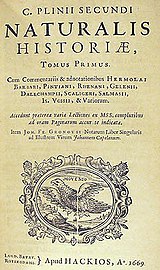
The
The work is divided into 37 books, organised into 10 volumes. These cover topics including astronomy, mathematics, geography, ethnography, anthropology, human physiology, zoology, botany, agriculture, horticulture, pharmacology, mining, mineralogy, sculpture, art, and precious stones.
Nominations
Feel free to add Featured, Category:A-Class , Good quality rated articles about books to the above list.
